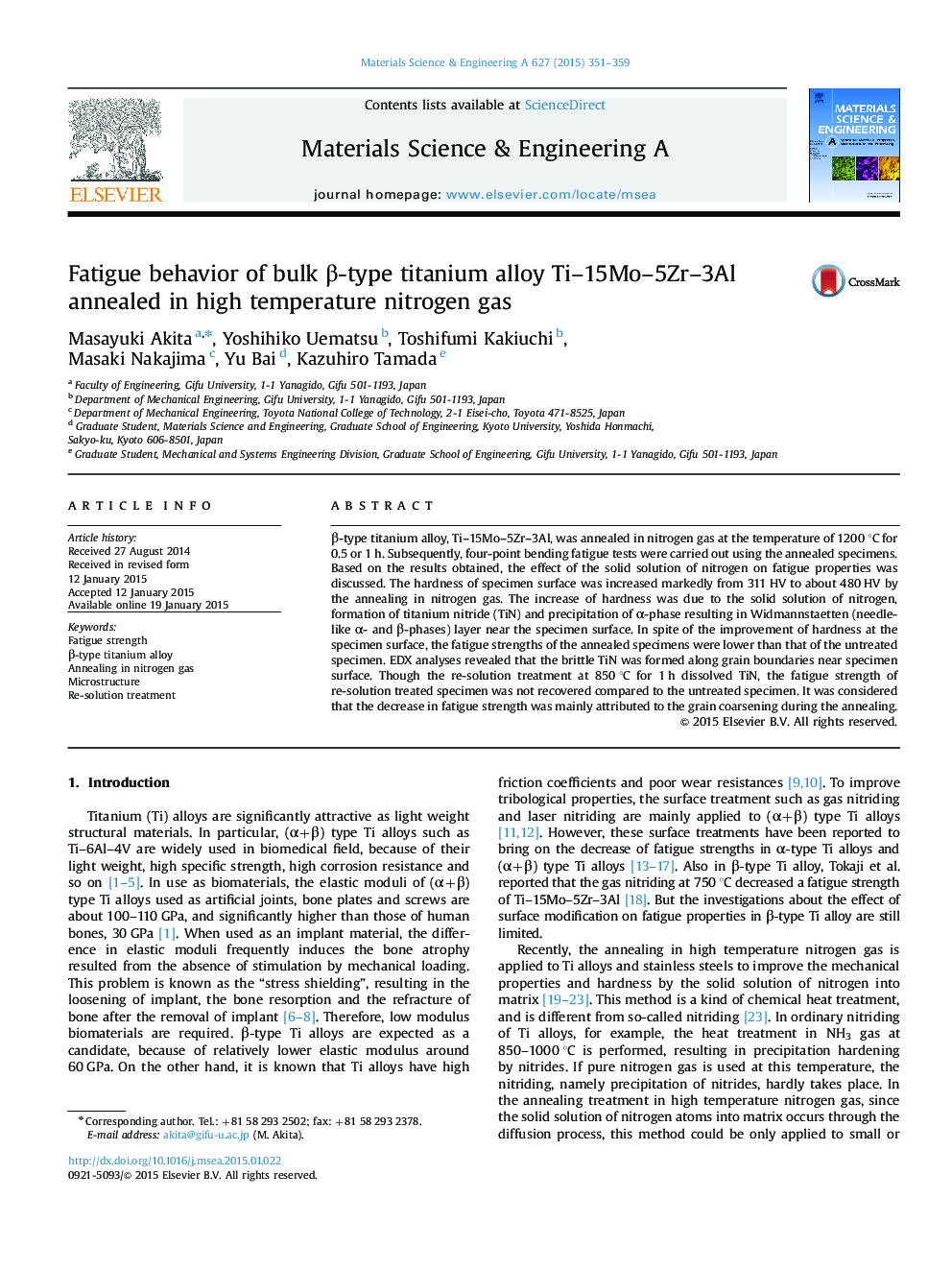| Article ID | Journal | Published Year | Pages | File Type |
|---|---|---|---|---|
| 1574548 | Materials Science and Engineering: A | 2015 | 9 Pages |
Abstract
β-type titanium alloy, Ti-15Mo-5Zr-3Al, was annealed in nitrogen gas at the temperature of 1200 °C for 0.5 or 1 h. Subsequently, four-point bending fatigue tests were carried out using the annealed specimens. Based on the results obtained, the effect of the solid solution of nitrogen on fatigue properties was discussed. The hardness of specimen surface was increased markedly from 311 HV to about 480 HV by the annealing in nitrogen gas. The increase of hardness was due to the solid solution of nitrogen, formation of titanium nitride (TiN) and precipitation of α-phase resulting in Widmannstaetten (needle-like α- and β-phases) layer near the specimen surface. In spite of the improvement of hardness at the specimen surface, the fatigue strengths of the annealed specimens were lower than that of the untreated specimen. EDX analyses revealed that the brittle TiN was formed along grain boundaries near specimen surface. Though the re-solution treatment at 850 °C for 1 h dissolved TiN, the fatigue strength of re-solution treated specimen was not recovered compared to the untreated specimen. It was considered that the decrease in fatigue strength was mainly attributed to the grain coarsening during the annealing.
Related Topics
Physical Sciences and Engineering
Materials Science
Materials Science (General)
Authors
Masayuki Akita, Yoshihiko Uematsu, Toshifumi Kakiuchi, Masaki Nakajima, Yu Bai, Kazuhiro Tamada,
